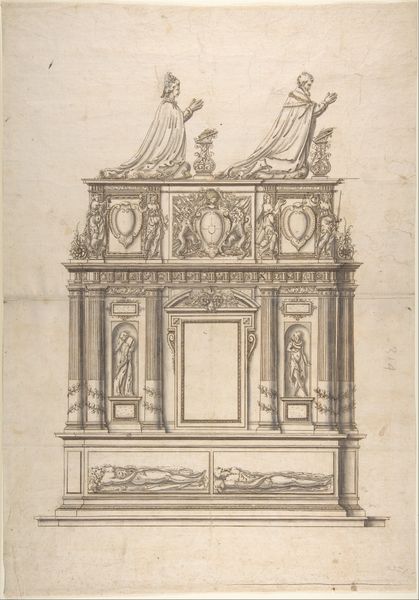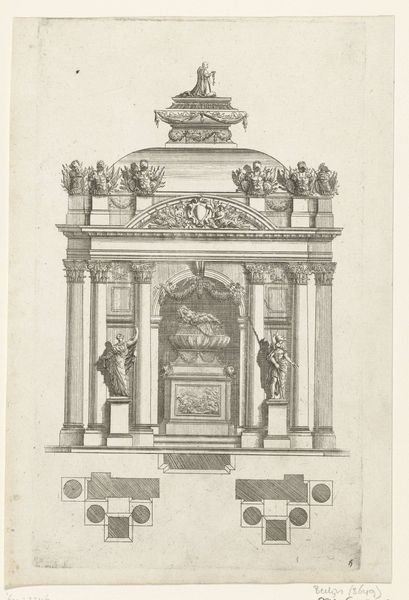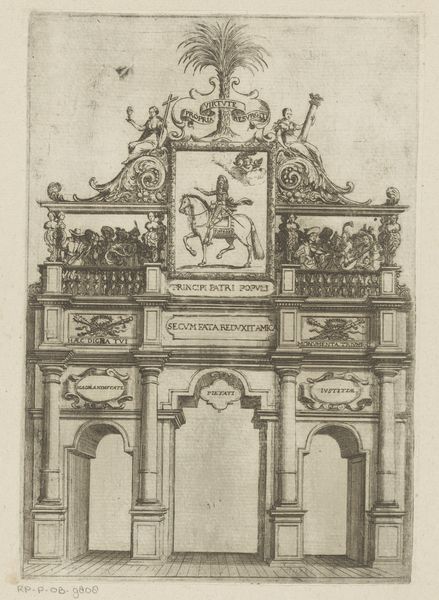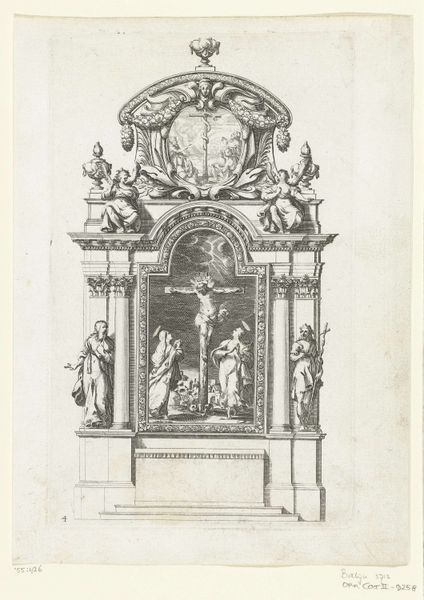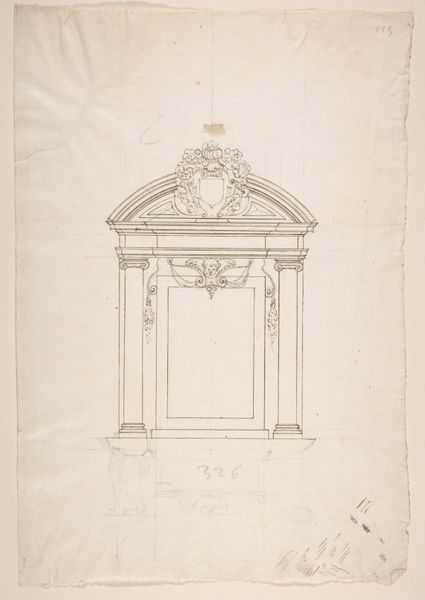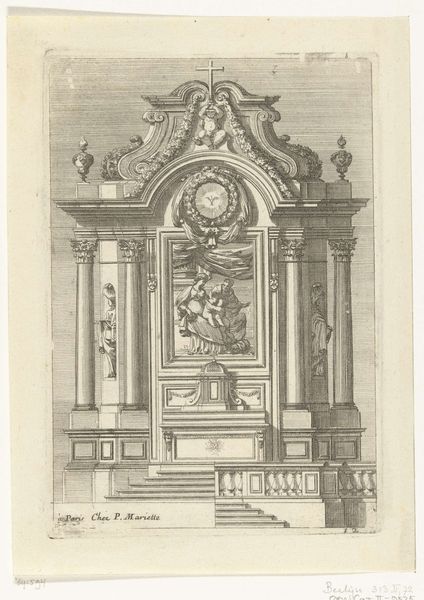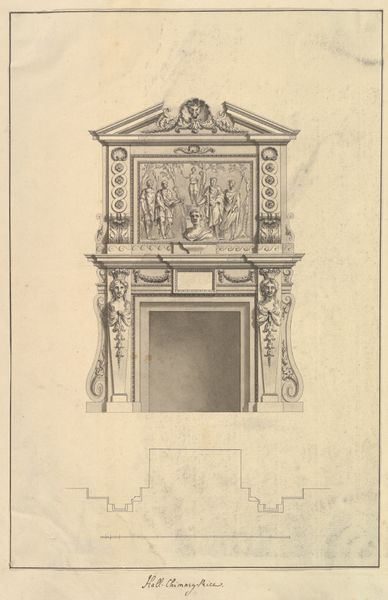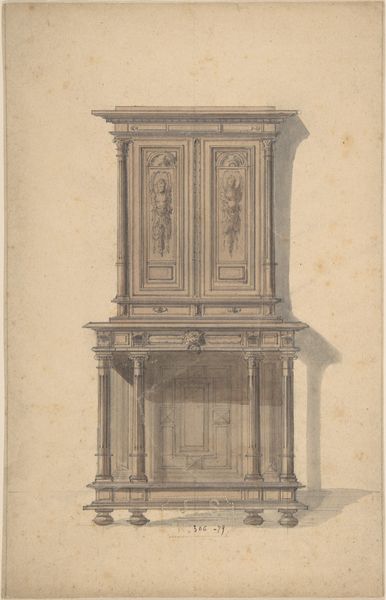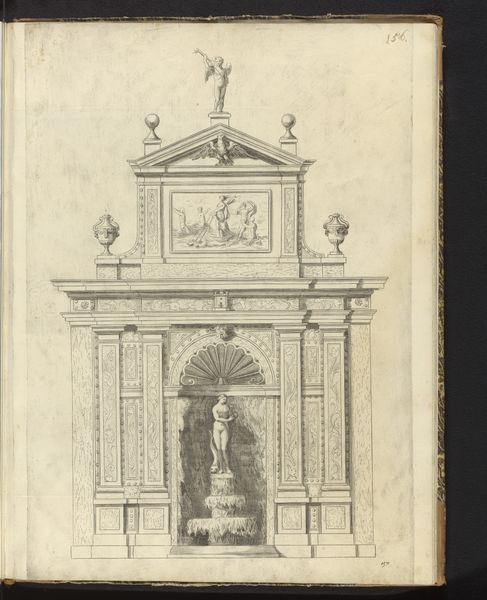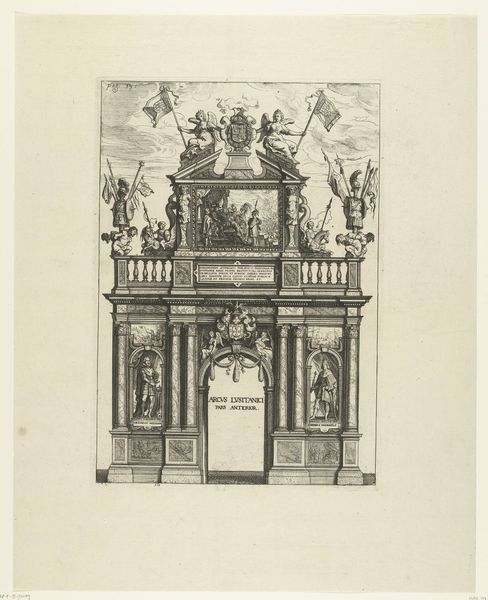
drawing, print, pencil, engraving, architecture
#
drawing
#
neoclacissism
# print
#
pencil
#
history-painting
#
engraving
#
architecture
Dimensions: 9 1/16 x 7 13/16 in. (23 x 19.9 cm.)
Copyright: Public Domain
Curator: Standing before us is "Elevation for a Wall Tomb" by Jean Michel Moreau the Younger, an architectural drawing likely dating between 1741 and 1814. Editor: It's stark, isn't it? A whisper of mortality rendered in delicate pencil strokes. I feel an immediate chill, despite the classical elements. It looks like a stage set for grief. Curator: It does have a theatrical air. The cool precision of the drawing—pencil and engraving on paper, of course—highlights the architectural elements: the symmetry, the imposing structure itself, clearly neoclassical. Were this constructed it could only honor someone of great stature. The stone would be imposing; costly to quarry and work, consuming significant time and skill. Editor: Precisely. Look at the crisp lines of the columns and the intricate detailing of the ornamentation—it’s almost an obsession with death, but a highly formalized one. Where would this have actually existed? A church? A nobleman's garden folly? It begs questions about access, privilege, and who gets remembered this way. What narratives did they think this evoked for common folk? Curator: We can only speculate, but that tension between the imposing nature of the monument and its potential private setting—it's definitely fertile ground for thought. This meticulous draftsmanship; think about the labour involved in that period, the planning, all suggesting the elite commissioned this object of eternal commemoration. I wonder how the workshop involved understood its role... did they have skin in the game to celebrate the person represented here, or was this simply business? Editor: Good questions, questions which have to lead us to further thoughts on consumption, and I keep coming back to that starkness, the austerity despite the ornamentation. Is this meant to ennoble or to intimidate? Maybe both? It really speaks to the grand theatre of power, wealth and passing, I suppose. Curator: A powerful and provocative composition—it certainly speaks to us centuries later, in layers of meanings that transcend mere architectural plans. I keep seeing the interplay of artistry and social structure—enduring in its ability to stimulate new perceptions. Editor: I'm with you on that. This cold mausoleum somehow sparks new debates around material wealth and artistry-- and about who gets remembered, and why.
Comments
No comments
Be the first to comment and join the conversation on the ultimate creative platform.
